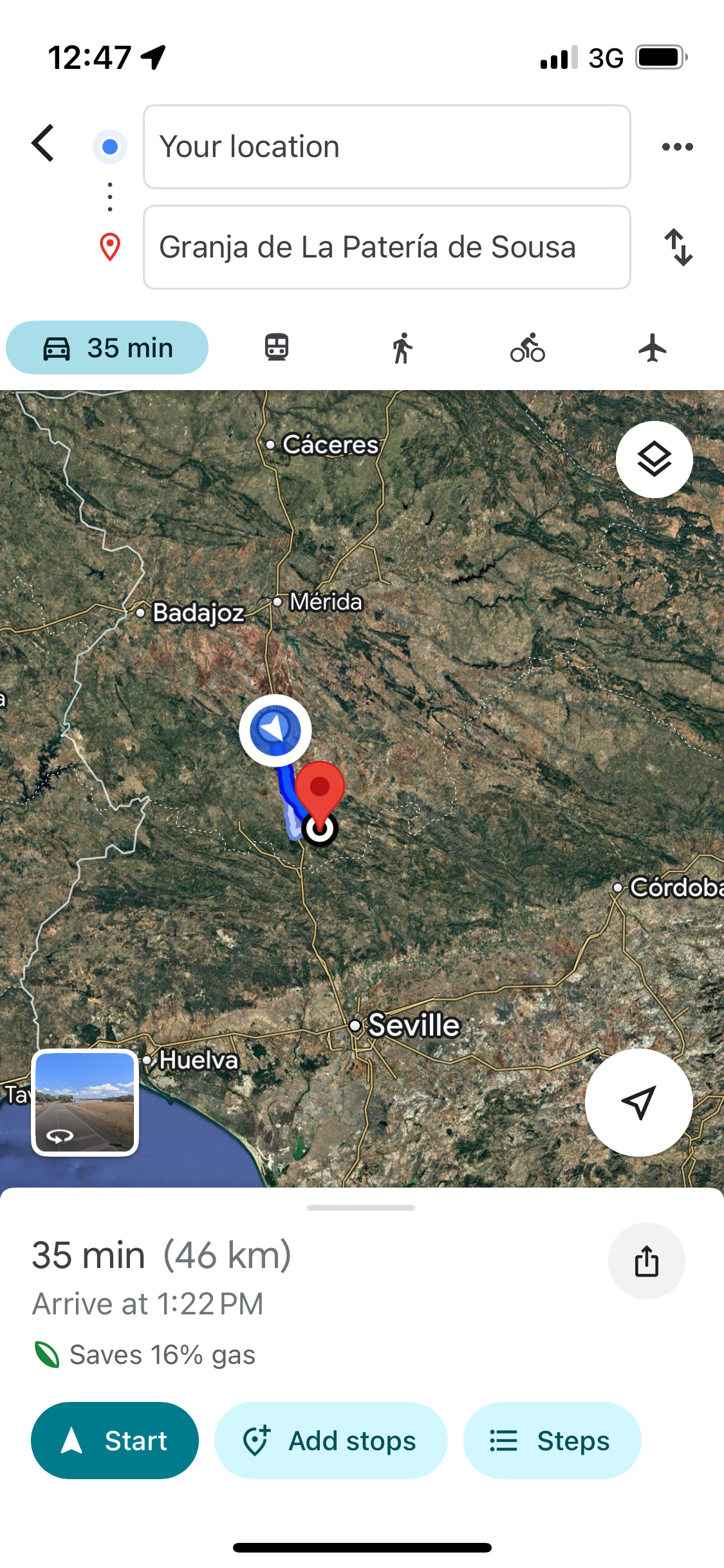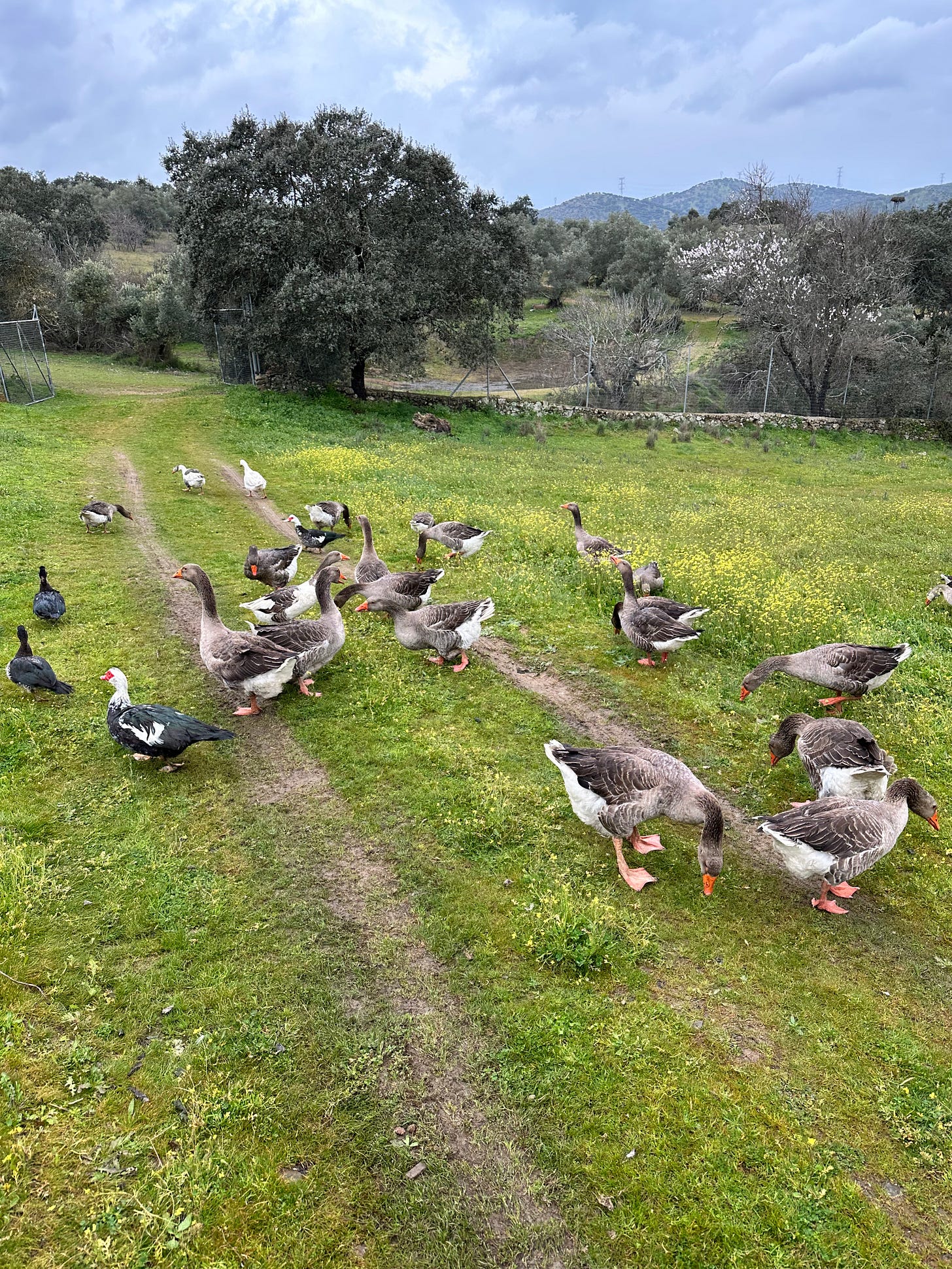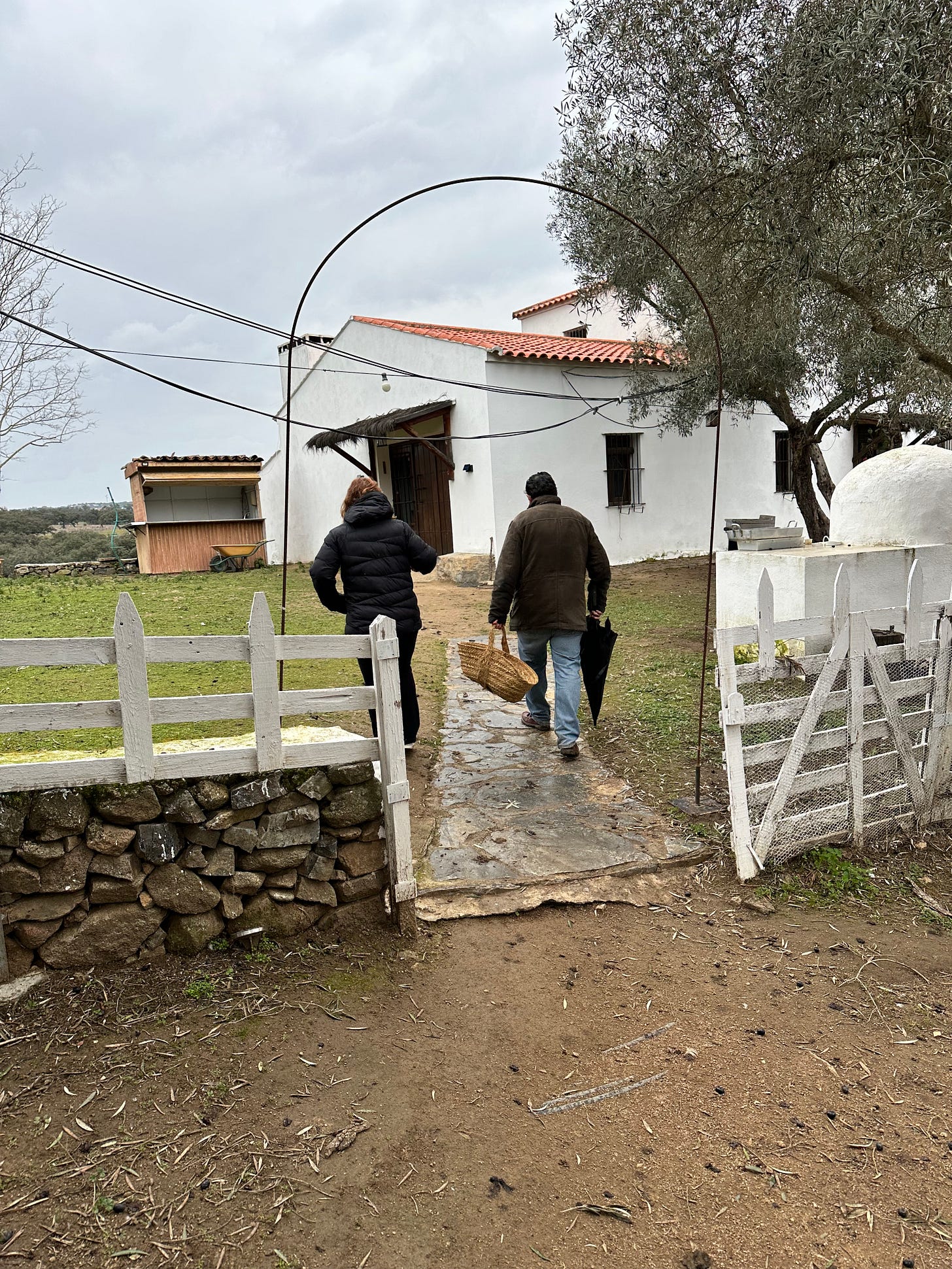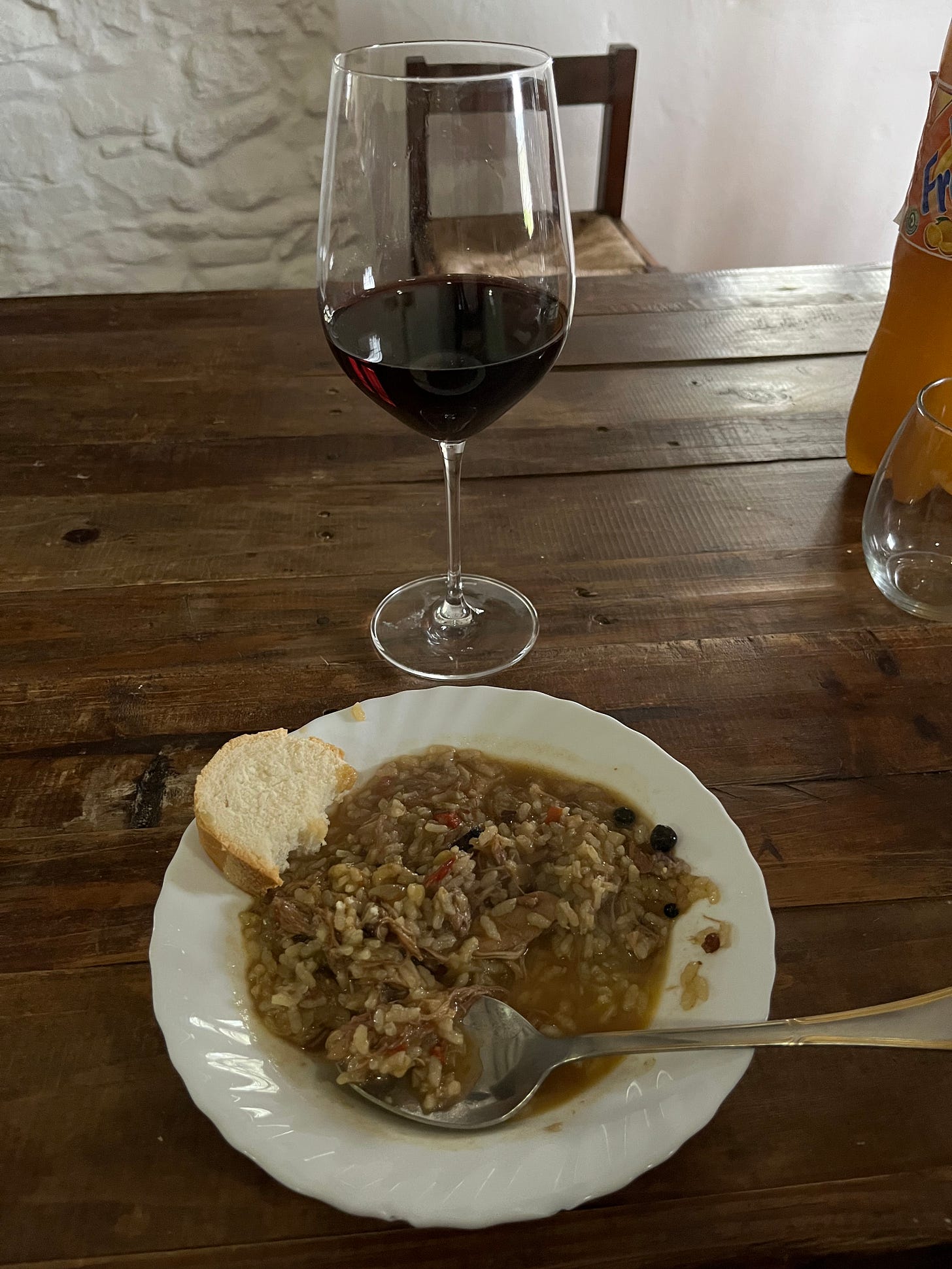A visit to a Spanish goose farm
My tour of La Patería de Sousa
I am an Iberophile - a word I made up to describe my love for Spain. I have visited many times and lived in Madrid two separate times. After moving back to Texas as a result of the pandemic shutdown in 2021, I was able to return for a week in February this year (2025). While we lived in Madrid (2018-2021) I didn’t know about La Patería de Sousa in Southern Spain, but began researching it after we got our acreage and started our flock (turkeys, ducks and geese in that order). Some of my interest also came about because our son wants to be a chef in the future and we enjoy both charcuterie and raclette. We discovered a fantastic local charcuterie store with boards, cheeses and specialty meats, local and imported. The knowledgeable owner has discussed and let us try guanciale, Moulard magret, acorn- and olive-finished meats as well as paté and foie gras. Admittedly, he is not a fan of ‘organ meats’ but recognizes their place amongst a charcuterie spread.
Paté is generally understood to be a meat paste made from liver (pork, duck being typical) while foie gras (French for ‘fatty liver’) is waterfowl liver that has stored up tremendous fat reserves. Ideally, the best foie comes from geese - each liver comparable to a duck, is larger. The fat storage process in the liver has been around for centuries and was noticed in Egypt as the birds would gorge themselves with food to make the long migration for the winter. The Egyptians and later, the Romans learned how to forcefeed captive waterfowl to achieve a similar result in domesticated geese, usually with refined grain-type feeds. A normal liver is dark red with well-defined lobes, whereas fatty foie from grains takes on an ivory tone and is enlarged. Foie’s flavor is also less intense with a soft texture, compared to liver which has a distinct organ flavor and can be tough. Modern foie farms combine the forcefeeding with corn and a rigid tube called ‘gavage’ together with extreme confinement to attempt to create foie. These techniques are understandably heavily condemned by those who know about them, despite the assurances by producers that they are in some form - humane. This is done on ducks as opposed to geese, simply because producers can pack more ducks than geese into a small area.
The only way this topic is tolerable to me is to distance myself a bit and attempt to view it from a conservation and producer standpoint. My family and I are mostly plant-based, except for special occasions (Texas BBQ is a requirement when we have out of town visitors!) and times when flock management is required or planned, like Thanksgiving turkey. I love cheese too much to be fully vegan, usually have an abundance of eggs around, and do enjoy occasional meats if they are as natural and humane as possible. Unfortunately, the demand for two of my favorite occasional treats - jamón serrano and Texas beef BBQ - can only be met by factory farming…or can it? Part of my journey to visit La Patería de Sousa and the interview with owner Eduardo Sousa was to explore the answer to that question.
Eduardo runs La Patería from his family’s 40 hectares (99 acres) in Southern Spain, roughly between Badajoz and Sevilla. He also has solar panels, water collection and treatment facilities, native olive, oak and fig plants on his land and offers sections of it to cattle farmers to lease to keep the plant growth controlled. His family has been using the same husbandry and processing techniques learned from Jewish settlers in Spain since 1812. La Patería has a separate Tienda - store - in a physical location as well as online that sells goose broth, whole carcasses, lard, eggs, rillette (deboned canned meat), cured breast meat, and of course, foie. That is, if you’re lucky or pre-ordered, since I have never seen their online store have stock available!
The day we chose to visit was a Tuesday, involved an eight-hour round trip drive from Madrid and was cool and rainy. We used main highways skirting Badajoz, then dipping down into a small, quaint town and through his main gate (with instructions: don’t let the cows out). Eduardo generously received us in the drizzle with umbrellas, a large basket of whole corn to toss at the geese and his friendly Spaniel. Driving up to the main house was interesting considering our diesel-powered SUV had to navigate creeks, cattle guards and a muddy slope up to the house and geese pastures. Even though Eduardo has been interviewed multiple times by famous chefs and business blogs, our interview was a laid-back conversational stroll amongst the geese. I took notes on both the questions and answers, but this post is not a transcription word for word.
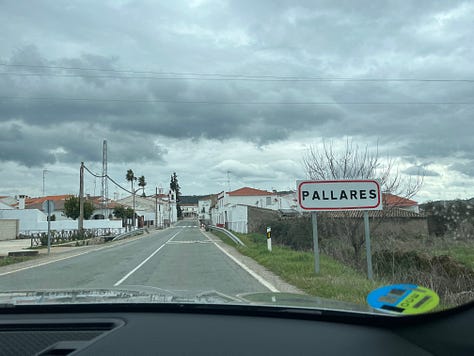
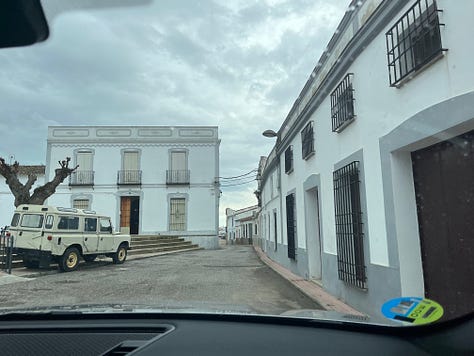
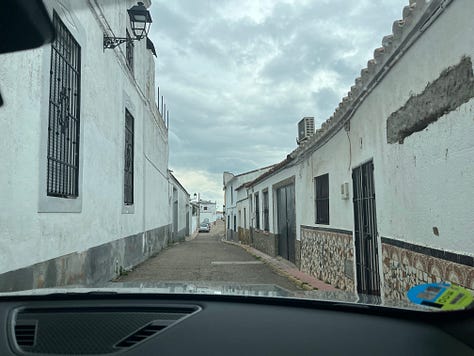
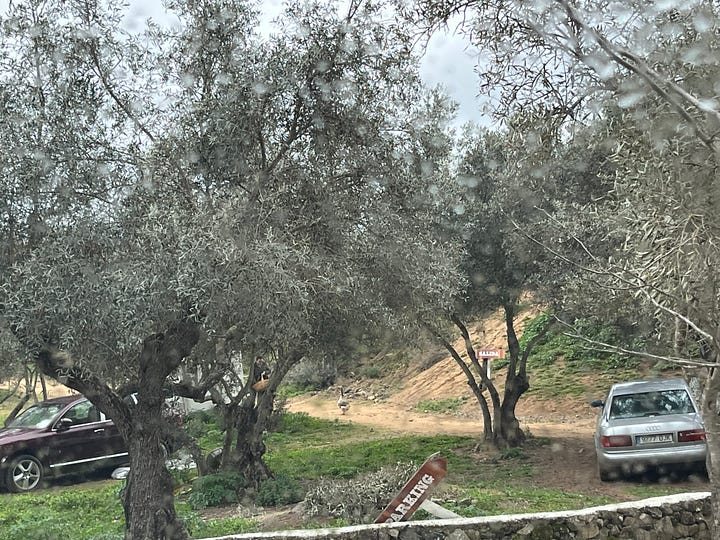
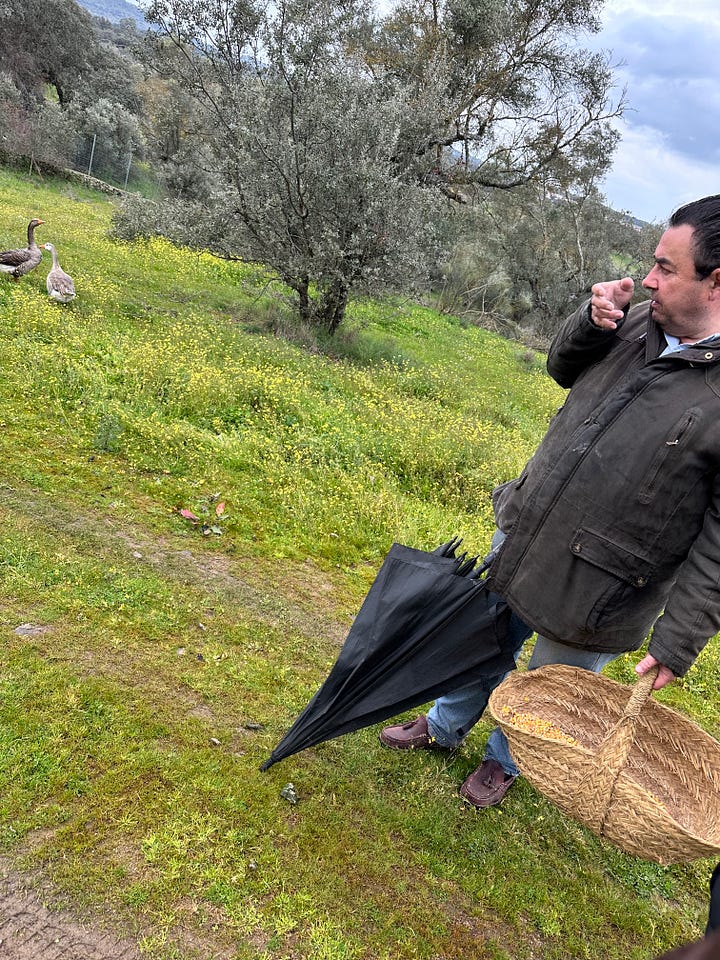
At first we introduced ourselves, explained my work with my own geese and livestock conservancy and rehashed the basic husbandry techniques I had gleaned from investigating La Patería. The geese are wild Greylag geese whose migration pathways run near Eduardo’s farm, called in by geese already there, they land to eat and nest on his property. They freely eat the wild grasses, forbs and flowers that grow as well as fallen acorns, olives and figs from native trees. They are free to move between pastures, fly away or nest as they please. Eduardo offers them handfuls of whole corn to whiten the color of their livers and so they don’t startle at his presence moving through the pastures. Once a year on a moonless night, Eduardo chooses a group of geese to process after the winter has begun, but before the geese fly off to migrate. His products for sale and personal use come from this one-time harvesting of the geese. He allows some geese to migrate or remain on his property year-round to nest, raise goslings and after a few months, call in more migrating geese flying by.
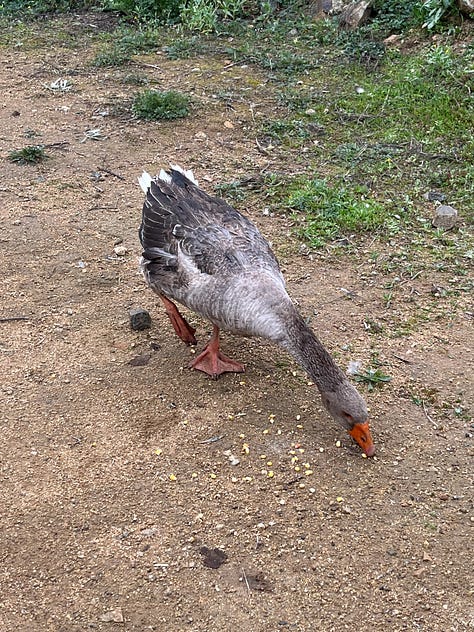
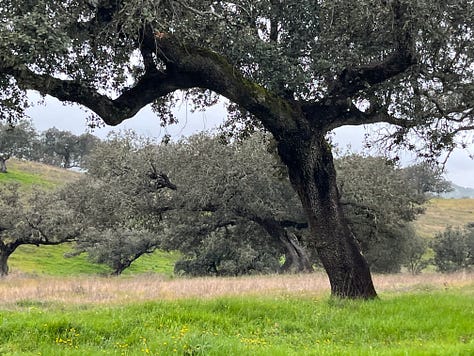
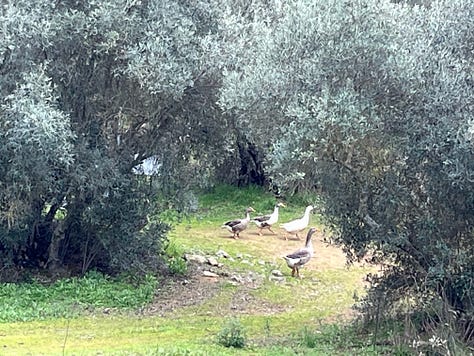
Are these all wild geese?
Some of them are wild and they tend to be smaller. They can also cross breed with domestic geese, I have seen them come in with more white feathers due to breeding with German domestic geese. After a generation or so, with good nutrition and safety, the geese tend to get larger. I even had these ducks fly in - I know who their owner is and asked if he would like them returned and he said, No, they’ll only fly back to your property anyway.
How do you know which is male or female? Is there a difference in the carcass or foie size or quality based on sex, size or breed?
I can’t tell from their color which is male or female. The females will go off to make a nest and lay eggs, sometimes two females will nest together and a male will stay near them to help protect the nest and goslings. She lays about 40 eggs from which a dozen will hatch and she will raise. There are predators here that will go after eggs or goslings, not usually after the larger geese. I was warned by a neighbor one year that I had a ‘buho real’ (Eurasian Eagle-Owl) flying around at night, so I had to install a strobe light pointed up to keep the owl away without the light upsetting the geese. I have not noticed differences in the foie based on anything other than the nutrition and freedom the geese get here on my farm.
Do you collect eggs to incubate?
I have an incubator, but have never used it. I can see where the geese go to hide their eggs, but don’t like disturbing the nest. I don’t select any breeding pairs, groups or breed traits, since that happens naturally by the geese themselves.
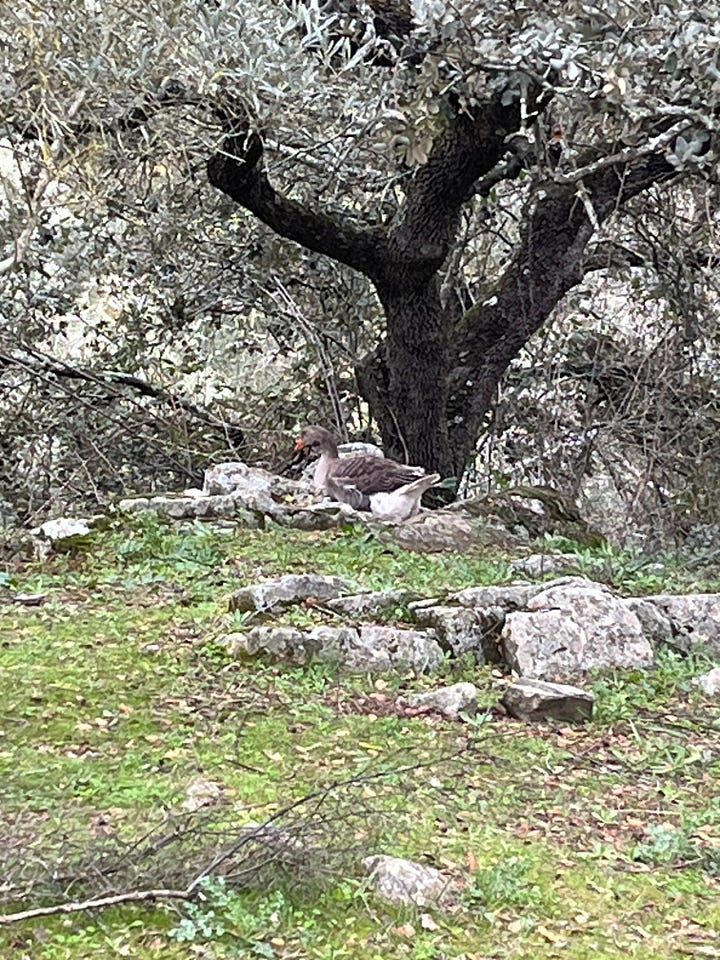

How do you choose the group for processing?
The night of processing has to be a very dark or moonless night, after the cold has begun so they have been eating a lot, but before they fly away. I have already observed and selected a group based on their age and how they bed together at night. We shine an LED spotlight at the geese and this dazes them, almost like hypnosis, but we still move among them very quietly to not upset them. You have to watch out for their wings and beaks - one bit me on the cheek and I had a large bruise for weeks. They are all processed here by me, my family and workers I usually hire from nearby that know what to do. The group can be anywhere from 300 geese during a drought year to 1,000 and we work until everything is completed. The down is collected first, plucked by hand, to make filling for jackets or bedding, then the cooked products.
What do the geese eat?
They can eat anything on my property. I had a nice lawn of grass next to the house, but so many geese ate it that it doesn’t exist anymore. We have an old well in the lower pasture with whitewashed walls - since the whitewash has calcium in it, the geese chew on it for their eggshells, so we have to whitewash it again and again. The ‘encinas’ (Quercus ilex or Holm oak) drop acorns that the geese eat. There are also olive trees. Once a year, harvesters from town come with sheets to collect olives. They have to leave the fallen ripe olives for the geese to eat. They keep 2/3rds of the olives and I get 1/3rd to sell or take to a cooperative mill that will press them into oil for me. The geese will eat the fruit but not the olive pits [I ignorantly asked if that makes more olive trees grow, but Eduardo patiently explained that olive trees do not grow from the pits. When I asked how he pruned or cared for the olive trees on his property, he simply said he didn’t do anything to them].
The geese will also eat the figs that grow around my property. I planted some Lupinbush (Lupinus arboreus) for the geese following Mediterranean traditions, since this plant is a legume (nitrogen-fixing) that produces edible beans (but must be properly cooked for human consumption). This particular plant has a yellow flower that also adds to the golden aspect of the foie. [After returning home and researching ‘la lupina’, the Texan in me was thrilled to see that this plant is a family member of our beloved Bluebonnets which I’d always heard were “toxic”, but have never seen my horse or birds show any interest in snacking on. Maybe this year instead of mowing once bluebonnet (Lupinus texensis) season is over, I’ll play alkaloid roulette and try cooking some of the beans! Probably for the best that nothing on my farm tries to eat these plants, since blueish foie would be hard to market - like my grey Cayuga eggs.]
You’re surrounded by Iberian ham farms - what do they think of your operation? Are they against what you’re doing here?
Iberian pigs have been here forever and they make good products. However, at some point the quality goes way down to meet the demand and I think jamón has peaked. It used to taste much better and was served with aplomb. That is why I won’t increase production even though demand is very high for my products. A few years ago we decided to increase our prices because demand was so high, thinking it would lower the demand pressure because it cost more. But it didn’t work that way - we still had the same pressure for products and didn’t want to just keep raising the price. We decided to keep production and price the same and focus on just producing a really tasty, quality product. We harvest only once a year and only what that harvest provides. We have a very old ‘secadero’ on the property for hanging and drying hams with a dirt floor. I was very close to renovating it by adding a stone floor when my friend told me not to - the floor sprinkled occasionally with water provides the right humidity for drying hams. We’ll hang goose breast meat in there and it cures just like a ham.
The only ones against what I do are the French [wry smile]. We won the foie taste award in France, competing against farm raised and forcefed foies and they have never been happy about that. The Spanish government does not provide me with any subsidies or help, but they also don’t interfere much, either. The pig operations are ambivalent and I even sell some local Iberian pork products at my store.
Are you worried about Avian Influenza?
This is only a problem for thousands of animals packed into a warehouse. Here, if an animal is sickly, the healthy birds will push it away from the flock. If I notice it doing poorly and isolated, I will make sure food and water is close by. Sometimes the bird will die. But usually it improves and is then ‘inoculated’ to whatever made it sick.
Have you thought of opening another farm like this elsewhere? Have you had any interest in raising geese like this instead of intensive production?
Recently, they opened up the ability to hunt geese in Doñana Park, which is a stop on their migratory routes. The hunters use calls to attract geese and then shoot them with rifles. The geese that don’t get shot learn to be wary - so when they arrive here and hear the real geese calling to them, they take their time to decide to land and stay here, deciding if it’s safe. I was also contacted about starting a farm like this one north of here, but we’re still developing the basic flock to call wild geese in for that area.
After we had conversed a bit around the geese, Eduardo invited us in to try some rice he had prepared with goose meat (recipe below). I had never tried goose meat before and expected either greasy or gamey, but this was neither! Even my 8 year old pickiest eater ever enjoyed it. It’s a family recipe of his that is simple to prepare, but with a depth and variety of flavors.
In that area, because of the Spanish Inquisition, Jews needed to hide the fact they were looking for something kosher to eat that wasn’t pig. Being surrounded by delicious pigs and yet avoiding eating them would raise suspicion and signal them out as Jews. They created euphemisms as well as a market for harvesting and preparing goose while also attempting to use as much of the goose as possible (feather down, meat, lard). As he was stirring the rice, I asked if he ever needed meat if he would grab a goose and harvest it and he said, No…this meat is from the yearly harvest’s rillette:
It doesn’t matter how much money you have, I wouldn’t recommend eating foie or even goose every day. It is to be savored and enjoyed, occasionally.
Footnotes, resources, links:
Let It Brie charcuterie
Gavage on foie farms in France *graphic*
La Patería online main page (video) and store (Spanish)
Chef Dan Barber’s TED talk on foie (English)
Business Insider video about La Patería (English)
Lupinus species plant list
Eduardo’s recipe for rice with goose meat (Spanish) Ingredients: Mixed white and dark goose meat - deboned and cut into small pieces, Olive oil, Red wine, Water, Garlic, Bay leaves, Thyme, Star anise, Black peppercorns, Crushed sweet almonds, Salt, Green and red chopped bell peppers, Onion, Saffron, Medium-grain rice [a rice for paella works perfectly here], Meat broth, Grapes for garnish.
Sauté the veggies in oil and add the goose meat once tender, along with all of the seasonings. Once that is tender and hot, add the broth. Once the broth mixture is hot and flavorful, add the rice, stirring constantly. Don’t overcook the rice [too soft] and serve, garnishing with grapes.



